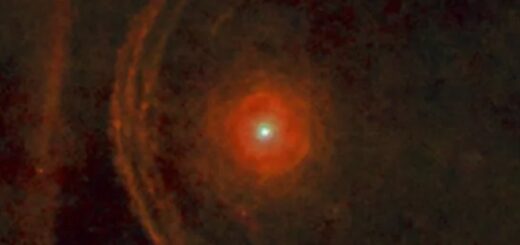Furthest galaxy ever? Researchers discover 13.4B year-old galaxy in deep space

Talk about a galaxy far, far away.
Astronomers believe they may have discovered the furthest galaxy from Earth, more than 13 billion light-years away from our planet, according to a newly published study.
The research, published in the journal Nature Astronomy, discusses the discovery of galaxy GN-z11, which is 13.4 billion light-years away. A light-year, which measures distance in space, is approximately 6 trillion miles.
“From previous studies, the galaxy GN-z11 seems to be the farthest detectable galaxy from us, at 13.4 billion light-years, or 134 nonillion kilometers (that’s 134 followed by 30 zeros),” study co-author and University of Tokyo professor Nobunari Kashikawa said in a statement. “But measuring and verifying such a distance is not an easy task.”
Though galaxy GN-z11 is 13.4 billion years old, the researchers noted that the light that emanates from it took 32 billion light-years to reach us, due to the expansion of the universe.
For comparison purposes, the universe itself is widely assumed to be 13.8 billion years old.
The team of astronomers looked at GN-z11’s redshift — the way light stretches, becoming redder the further it travels — to determine its distance from Earth. They also looked at chemical signatures, known as emission lines and ultraviolet light to give them an estimate of the distance of GN-z11′.
“We looked at ultraviolet light specifically, as that is the area of the electromagnetic spectrum we expected to find the redshifted chemical signatures,” Kashikawa continued.
“The Hubble Space Telescope detected the signature multiple times in the spectrum of GN-z11. However, even the Hubble cannot resolve ultraviolet emission lines to the degree we needed. So we turned to a more up-to-date ground-based spectrograph, an instrument to measure emission lines, called MOSFIRE, which is mounted to the Keck I telescope in Hawaii.”
Galaxy GN-z11 is not the only “Star Wars”-linked galaxy to be discovered in recent memory. In August, NASA discovered an active galaxy 500 million light-years from Earth that looks eerily reminiscent of a TIE fighter from the acclimated space franchise.
In June 2016, exoplanet Kepler-1647 b was discovered 3,700 light-years from Earth. It is part of a double-star system, similar to Luke Skywalker’s home planet, Tatooine. Three years later, exoplanet LTT 1445 A b and its three stars were discovered.
Researchers discovered what they described as “the first volcanically active exomoon” in August 2019, a celestial body eerily reminiscent of the tiny, fiery “Star Wars” planet Mustafar, where Anakin Skywalker turned into Darth Vader.



 Creators of mankind
Creators of mankind Description of “Tall white aliens”
Description of “Tall white aliens” Where they came from?
Where they came from? About hostile civilizations
About hostile civilizations The war for the Earth
The war for the Earth “Tall white aliens” about eternal life
“Tall white aliens” about eternal life Video: “Nordic aliens”
Video: “Nordic aliens” Aliens
Aliens Alien encounters
Alien encounters The aliens base
The aliens base UFO
UFO Technology UFO
Technology UFO Underground civilization
Underground civilization Ancient alien artifacts
Ancient alien artifacts Military and UFO
Military and UFO Mysteries and hypotheses
Mysteries and hypotheses Scientific facts
Scientific facts


















